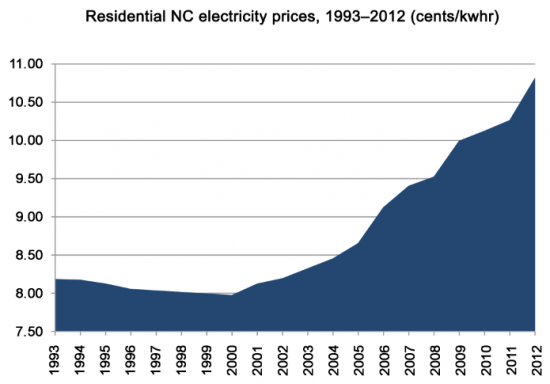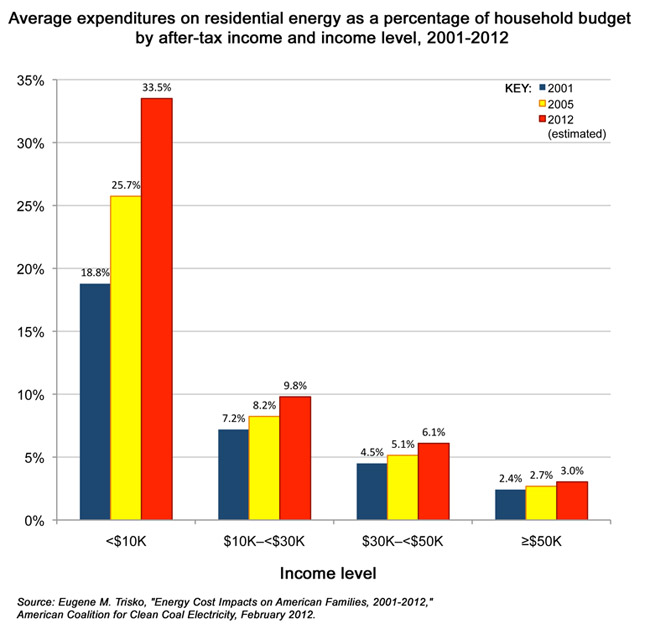CWIP: Corporate welfare in progress
Published February 26, 2014
by Jon Sanders, The Locker Room, John Locke Foundation, February 26, 2014.
Well, that isn’t exactly what CWIP stands for (it’s “Construction Work in Progress”), but in a sense it’s what CWIP is. North Carolina has had CWIP on the books since the passage of SB 3 in 2007. As Daren Bakst explained (emphasis added):
Construction Work in Progress … means that utility companies can pass on the costs of building nuclear power plants as they incur those costs. If the plants never get finished, electricity customers still bear the costs of the plants.The risk associated with building plants is shifted from utility company shareholders to electricity customers. The result is that utilities have little reason to be cost-efficient in constructing plants. This disincentive to be efficient will lead to:
- Increased construction costs
- Overbuilding of plants
- Delays in plant construction
Rate increases for nothing
Neighboring South Carolina, Georgia, and Florida are among the other CWIP states. Utilities defend CWIP by saying it keeps ratepayers from being hit by large rate increases when fully constructed nuclear power plants come on line and that it helps them pay for the plants as they go rather than spend years and far more money paying interest. That may well be true, but the argument hinges on two main assumptions: that the plants will come on line, and that they will not be beset with huge cost overruns — assumptions that have been proven false in such places as … South Carolina, Georgia, and Florida.
CWIP compounds the problem of making electricity more expensive for the highly dubious benefit of necessary cronyism for green energy. It represents a potentially second way for SB 3 to force people to pay higher electricity prices while getting nothing in return.
Why CWIP?
The Energy Policy Act of 2005 authorized federal loan guarantees for new nuclear plant construction of up to 80 percent. Nevertheless, the nuclear industry argues that the risks of construction are so great that such an extensive guarantee isn’t enough to get private investors to pitch in for the rest — and Wall Street investment banks agree. In 2007, Citigroup, Credit Suisse, Goldman Sachs, Lehman Brothers, Merrill Lynch, and Morgan Stanley wrote to the U.S. Department of Energy to state that anything less than a 100 percent unconditional guarantee would not be enough to jumpstart private investment.
This situation had Cato Institute’s Jerry Taylor and Peter Van Doren write in Forbes on April 5, 2011, that “for principled supporters of a free market, that should be information enough about the merits of this commercial enterprise.” But they went further, pointing out that those few utilities that were interested in building nuclear power plants
do business in states where construction costs are automatically plugged into the rate base. So in theory at least, risks would be transferred from the utility to the ratepayer with utilities at least guaranteed to break even. Even so, the increasing cost gap between nuclear and gas-fired power makes it unclear whether any of these generators will actually get built.As Peter Bradford, a former member of the U.S. Nuclear Regulatory Commission and former chair of the New York and Maine utility regulatory commissions, puts it, “In truth, the nuclear renaissance has always consisted of the number of plants that government was willing to build.” Regardless, federal attempts to jump-start the industry — as Herculean as they have been — haven’t come even close to closing the competitive gap with gas-fired generation.
In other words, CWIP amounts to that last bit of government guarantee needed to get utilities and investment banks to the magic 100 percent. Force ratepayers to cover the miniscule amount that taxpayers weren’t compelled to bear, and abracadabra, suddenly the enterprise makes business sense.
Unless, that is, you’re a taxpaying captive ratepayer:









